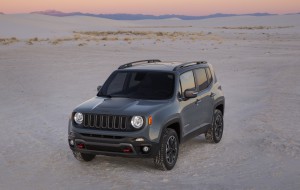
Nissan continued to see sales increase in July. The Nissan division saw its sales jump 1.7% compared with last July's results.
New car sales sputtered in July as Fiat Chrysler, Audi and Nissan and Honda all posted small gains, but General Motors, Ford and Toyota all saw their sales decline from year-ago-levels as sales remained stable but flat as buyers continued to snap up truck and utility vehicles of all kinds.
General Motors sales fell 1.9%. So far this year, GM sales are down 4% and GM executives have blamed the drop on a shift in strategy, which has seen GM reduce sales to rental fleet customers.
“Our retail-focused plan is working and as availability of our new cars, trucks and crossovers continues to grow, we expect to keep our retail sales momentum going and our strong margins intact,” said Kurt McNeil, U.S. vice president of Sales Operations, noting GM’s daily rental deliveries are down 38% from a year ago.
GM ended July with a 66-day supply of vehicles, McNeil noted. In addition, GM continues to take advantage of a strong, stable U.S. economy to grow its retail business.
“Low interest rates, full employment, stable fuel prices and increasing wages remain in place and these positive factors continue to point toward a strong second half of the year and another potential record year for the industry,” said Mustafa Mohatarem, GM’s chief economist.
(Despite solid July sales, Ford CFO sees U.S. auto recovery at an end. To find out why, Click Here.)
Ford Motor Co. said the company’s U.S. sales were down 2.8%, with 216,479 total vehicles sold. Fleet sales – sales to large companies, government customers and rental car companies – were up 6%, with 55,321 sold. Retail sales were down 6%, with 161,158 sold.
“Trucks and vans continue to be market strengths for Ford,” said Mark LaNeve, Ford vice president, U.S. Marketing, Sales and Service. “Van customers rewarded us with another strong year-over-year gain, and F-Series had its best retail sales this year.”
Ford’s overall transaction pricing also grew $1,600 in July versus a year ago – more than double the industry average – driven by the continued higher mix shift to trucks and SUVs, LaNeve said.
On the success of its newest products, Lincoln retail sales rose 2 percent in July. Lincoln MKZ sales were up 12.3%, while Lincoln MKX was up 5.4%. Overall Lincoln sales were down 4.6% for the month.
Toyota Motor Sales reported July 2016 sales dropped 1.4% on a daily selling rate Toyota while Lexus sales dropped 6.5%.
Volkswagen sales tumbled 8% in July as the German car makers continues the free fall that began last fall when it was revealed the company had cheated on federal emission tests. Audi, on the other hand achieved its best July in the brand’s U.S. history as it posted a 4% sales increase for its 67th consecutive month of sales increases
Fiat Chrysler Automobiles. which has revised its sales reporting in the face of legal pressure, said its sales increased by 0.3% compared with sales in July 2015. FCA US said retail sales were down 2% in July, while fleet sales were up 22% year over year.
Both the Jeep and Ram Truck brands were up 5% in July compared with the same month a year ago. The Renegade, Grand Cherokee, Compass and Patriot posted sales gains in July versus July 2015, as did the Ram pickup truck and the Ram ProMaster and Ram ProMaster City vans. Two Dodge brand models the Dodge Grand Caravan and the Dodge Challenger also registered increased sales.
(How will July sales look? Click Here.)
American Honda reported a 4.4% sales increase for July with Honda division up 5.9% but the Acura division sales its sales drop 8.3%
Nissan Group said total U.S. sales for July 2016 of 132,475 units, an increase of 1.2% over the prior year, setting a July record. Nissan division sales were up 1.7%, led by sales of Nissan crossovers, trucks and SUVs, which set a July record, up 16%. The brand’s luxury division, Infiniti
The analysts at Kelley Blue Book estimated average transaction price for light vehicles in the United States was $34,264 in July 2016. New-car prices have increased by $832 (up 2.5%) from July 2015, while rising $82 (up 0.2%) from last month.
Jessica Caldwell, an analyst with Edmunds.com, noted that the sales are slower in part because carmakers are pulling back on some financing deals.
“If automakers expect to outperform last year’s record-breaking sales, they’re going to have to lean more heavily on creating and promoting attractive financing offers to lure new buyers into showrooms.”
“Zero percent financing deals were much more common last year summer than they are now: 12.9% of new car loans in July of 2015 were 0%, while only 10.2% of loans were zero percent this July,” she said.
(Some analysts think that U.S. auto sales have hit their peak. Click Here for the reasons.)
“We’re also seeing indicators that lease deals were much harder for car shoppers to come by in July, as lease penetration dropped to 27.8%, the lowest level since May of 2015. While some of the softness in leasing can be attributed to seasonal fluctuations and the fact that GM’s lease penetration dropped below 20%, lease customers are very price sensitive and may need a bit more of a nudge than they’re currently getting to convince them to close the deal,” Caldwell said.

